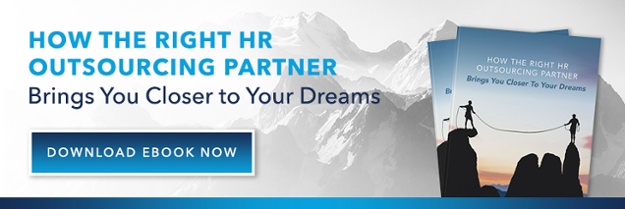Topic Outsourcing HR / PEO
How are Workers' Comp Premiums Calculated?
.jpg)
May 13, 2021 | By Laura Platero
.jpg)
Controlling workers' compensation premiums is a challenge. A single workplace accident can raise your rates and cut into your cash flow. When you understand how workers' comp premiums are calculated, you can take action to decrease those costs.
One of the best ways to control workers' comp costs is to partner with a Professional Employer Organization (PEO). PEOs control workers' comp costs through numerous proactive measures.
What is workers' compensation insurance?
Workers' compensation insurance coverage is a type of business insurance that, with few exceptions, all employers must carry. If an employee gets injured on the job, this insurance will cover the employee's medical bills and lost income.
What impacts workers' compensation premiums?
Insurance companies weigh several factors when determining your workers' compensation insurance premiums. The insurance company is basing your premium on the risk that your business experiences a workers' comp claim.
Employee Classification Rate
The employee classification rates determined by your workers' comp insurance provider relate directly to your employee class codes. The National Council on Compensation Insurance (NCCI) or your state provides codes for each type of employee. The workers' comp insurance company uses these codes to determine rates based on the risk of injury to each type of employee.
For example, construction workers have a different classification code than administrative workers. Construction workers also have a greater risk of on the job injuries, so the insurance company will estimate their employee classification rate higher than the administrative employee.
Employer Payroll
Payroll directly affects your workers' comp premiums. Your workers' compensation provider calculates your premiums based on your total payroll.
As an employer, you want to reward loyal and productive employees with raises. You want to hire new staff to continue your company's growth. Every time you do that, however, your workers' comp premiums increase.
Experience Modifier Rate
The experience modifier rate (EMR) has a significant impact on your workers' compensation premiums. Your company's workers' comp insurance provider calculates your EMR using the number of claims and workplace injuries your company has had in the past.
A high EMR can quickly send your workers' comp premiums through the roof. Controlling workers' comp costs means understanding and reducing your EMR, which is much easier said than done.
State and Federal Taxes
When you pay wages to employees, you must pay state employment taxes. One of these state taxes you will pay is state unemployment insurance (SUI).
There is a similar federal tax. The Federal Unemployment Tax Act (FUTA) is a payroll tax paid by all employers in the United States. Based on your company's payroll, the tax rate is 6% on the first $7000 paid to an employee. Any wages paid to the employee beyond that amount are not subject to FUTA.
How is your workers' comp premium calculated?
All of these factors combined play a role in determining your company's workers' comp premiums. Based on your company's industry, the work performed by your employees, your company's payroll, as well as your company's history of claims and workplace injuries, all factor into your workers' compensation premium calculation.
The higher your payroll, the higher your workers' comp premiums. The more workplace accidents your employees have, the higher your workers' comp premiums. Controlling your workers' comp costs can be a challenge, but with the right partner, it can be done.
How can a PEO lower workers' comp costs?
A PEO can give your company the workers' comp relief you seek. Your business can save costs by proactively working toward reducing the issues that give rise to increased workers' comp premiums.
Worker Classification
NCCI employee classification codes can be confusing. You may have employees who could legitimately fall under more than one classification. Choosing the wrong code could mean you end up paying a higher premium.
Your PEO staffs HR experts who know the ins and outs of workers' comp class codes. They know which codes carry lower rates and will correctly classify your employees under these codes to reduce your overall workers' comp burden.
Safety Program
If your company operates in a high-risk environment, creating a safety program can dramatically reduce your workers' comp burden. A safety program gives new hires vital information about staying safe on the job.
When employees know how to stay safe while working, they avoid getting injured. When the number of claims against your company goes down, so does your workers' comp premium. Your PEO can help you create a safety program that trains new employees, reminds existing employees how to stay safe, and most importantly, increases your employees' safety and reduces your workers' comp premiums.
Experience Modifier
Your EMR may be high. A high EMR translates to high workers' compensation premiums, cutting into your profits.
When you partner with a PEO, you get access to the PEO's EMR, which might be substantially lower than yours.
Avoid Workers' Comp Rate Increases with a PEO
Being proactive about your workers' comp costs means taking several steps. One of the most important steps you can take is to partner with a PEO.
When you join a PEO, you take control of your workers' comp costs. You don't face major rate increases and you may even reduce your premiums. Find instant relief by partnering with the right PEO today.
.jpg)
Laura Platero
Laura serves as the Director of Product Strategy. She is an expert in large scale benefits account management, project management, product development, sales, customer service, and benefits consulting.



